If you’re new to prepping, you probably heard the term bug out location before (BOL, for short). As you can probably guess, it’s the place preppers will bug out to when SHTF.
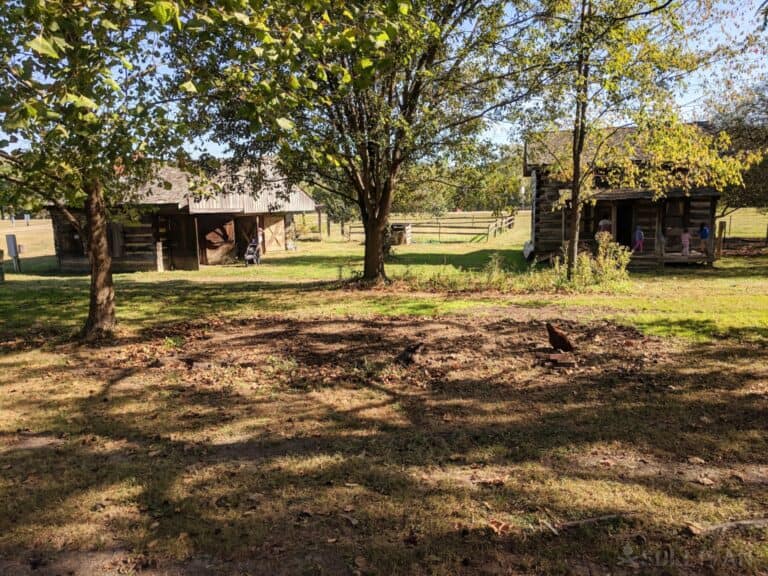
But what is it, exactly? And why do you need one? Let’s try to give a clear definition.
A bug out location is a piece of land, house, apartment or shelter that you can evacuate to in case of a disaster or emergency, and it is different than your home (your bug in location).
However, most people think about permanent shelters, which is only partially correct. Some think about temporary shelters away from home when they refer to BOLs, but we’re just going to focus on permanent retreats. We’re going to leave temporary wilderness shelters for some other time.
There are many considerations that must be considered when selecting the suitability of a BOL for a long-term occupation. The longer you plan to stay in one place and sustain yourself there, the more complicated the task becomes.
Considerations such as access to resources, ingress and egress, security and more must all be balanced against each other, and strain more than a little from the ideal in any of them could see you and members of your family or group suffer.
In this guide we are going to dig into all of these considerations and show you how they interact with each other so that you will be better equipped for analyzing, assessing and selecting the right bug-out location to serve your long-term SHTF survival needs.
In what follows I want to talk to you about finding your own bug out location to hide at when society starts to crumble. We’re going to cover a lot of aspects so let’s not waste anymore time!
In the following sections, we’ll be covering all of the various factors that must be assessed when selecting a good bug-out location.
And to be clear, a good bug-out location is not necessarily one that is remote, almost unknown and barely hospitable. In fact, a good BOL might be just be a place you already know quite well.
Just in case you’re wondering about my own permanent bug-out location, it’s 52 miles away from where I live, a place I already know well.
It’s in a very small village with population of about 200, hidden between some of the most beautiful hills you’ve ever seen. That’s where I spent all my summers as a kid, living with my grandparents.
You might say the experiences I had growing up in a rural and sparsely populated part of the country were sort of formative to my prepping lifestyle.
That is probably true, but more important to the topic at hand, this tiny village is still possessed of the qualities today as then, qualities that make it an especially good BOL.
I’d ask you to keep that in mind as you read; your ideal BOL might be a place you have already spend much time in!
Table of Contents
Getting There
Getting there is the hard part and largely dependent on the natural or man-made disaster that occurs. Depending on the distance, you can get to your bug out location by foot or by using a bug out vehicle.
Getting to your bug out location is naturally a prime consideration when the time comes for you to make use of it.
If you cannot get to it, it cannot serve you. for this reason many preppers will spend a disproportionate amount of the time assessing their bug-out location for accessibility concerns.
You need to know as many different routes as possible to reach your BOL.
Keep in mind that some of the main routes may be blocked due to calamity or by the police/national guard, so you absolutely need to have alternate routes to reach it. Secondary roadways and even the rail tracks are two options that come to mind.
First and foremost, any serviceable BOL must be reachable by more than one route. If your BOL can only be accessed by a single, treacherous, winding goat path on a mountain, there is simply too much that can go wrong concerning the path itself to make the BOL a reliable option when the chips are down.
Consider also the distance to the location. The longer the distance gets to your bug-out location from your home the more likely it is you will be forced to rely on a vehicle of some kind in order to reach it in a timely fashion.
It does not mean you cannot reach a very distant BOL on foot, but that will add even more complexity to your journey.
On that note, for all but the farthest or nearest BOL’s and sure you plot at least one reliable route for each type of movement, vehicular and on foot.
Ideal Bug-Out Location Requirements
If you’re contemplating purchasing land for your retreat, let me give you a few pointers.
Proximity
Balancing the requirement for speedy access but also for keeping your BOL far enough from your home so they aren’t both embroiled in the same problems that sent you fleeing in the first place is challenging.
The ideal BOL should be far enough from your current location to keep you safe from the SHTF, but close enough so you can get to it.
Ideally, you should be able to get to it within a day, whether by foot or by car. 50 to 100 miles should be far enough if you’re planning to get there by car, 25 to 50 miles if you’re planning to get there on foot.
Under no conditions, barring total calamity, should reaching your bug-out location take longer than 3 days, by foot or by vehicle.
Speaking of, be sure to consider worst case scenarios that are likely to slow you down or otherwise delay your arrival. What will your ‘first and best’ choice route look like if you are no longer able to travel it via your preferred mode of transport?
Also, don’t let yourself be bottlenecked into thinking the only way to get to your destination is via your own two feet or taking a bug out vehicle, whether or not it is your daily driver.
Other modes of transportation may have much to commend them depending on your specific circumstances, and some of them might not be vehicles you would initially think of as worthwhile.
Consider the following:
- Bicycle: Bicycles are quiet, efficient and easy to transport when the terrain no longer favors them. Mountain bikes can also afford you significant capability when going off road. Bicycles also confer a major advantage when weaving down sidewalks or through gridlocked traffic or other vehicles simply cannot fit. Getting the most out of a bicycle means you’ll need to be physically fit, so put in the miles on it now before you need it during movement to your BOL.
- Motorcycle: Motorcycles combine the size advantages of bicycles with the speed and efficiency of an automobile. Motorcycles take considerable skill to ride safely, though, and usually lack for cargo carrying capability. Also, motorcycles may only be pushed over relatively forgiving terrain once they’re out of fuel or no longer capable, compared to bicycles. Still, they are highly fuel efficient, agile and easy to hide when the time comes. If you are a skilled rider consider a dirt bike for reaching a remote BOL.
- Boat: Boats big and small might be a perfect alternative source of transportation if you live near a large lake or river. Compared to any roadway, lights and rivers are unlikely to be so clogged with traffic during your bug out that you cannot make use of them. Boats are, however, of no use at all if you cannot utilize a local body of water heading in the direction that you want to go. Even something like a rowboat might prove more than sufficient for your purposes.
Caveat: Some people want their location to be as far away as possible because many disasters such as hurricanes affect entire regions so it would make sense to go as far away as possible.
I agree with this logic as well but it’s up to you to decide where you want your BOL to be.
You want your location to be at least 50-100 miles off any coast. If a tsunami hits, you don’t want to be in its way nor in the way of those who will flee in your direction. It should also be at least 100 miles away from any nuclear threat.
In addition, it ideally shouldn’t be more than 1 tank of fuel away. You might not have time to refuel or gas stations may be closed.
Isolation
When choosing a bug-out location, consider how isolated it is from other human habitation, and lines of human movement. Isolation is a double-edged sword, and maybe more or less preferable depending on your group or family status.
If you have a large family or survival group able to reliably do what jobs need to be done while providing ample security during downtime and in times of uncertainty an isolated BOL might be ideal for reducing the number of unknown contacts you encounter in the form of other survivors or opportunistic predators.
On the other hand, isolation is bad for small groups or families and especially bad for loan individuals. it is simply too easy for something to go wrong that can leave you flapping in the breeze with no recourse.
If you’re currently living in a city, the ideal of living in complete isolation might be too big of a step for you… so consider living in a small town, preferably at a respectable distance from other neighbors.
But if you want complete security, then building and equipping a log cabin in the woods that no one knows about is ideal. If possible, make sure your BOL is not visible from above, either, in case a helicopter or a plane scouts the area.
Think twice before choosing a truly isolated BOL and carefully consider all of the variables before committing.
Tip: try looking at satellite imagery taken at night. This way, you’ll easily spot dark areas where the population count is low.
Costs
Land with readily-available natural resources is going to cost more, so you need to set up a budget.
Make sure you include other things besides the actual purchase, things like building or upgrading the survival retreat, stockpiling supplies, building a barn, digging a well or developing a natural spring, and so on.
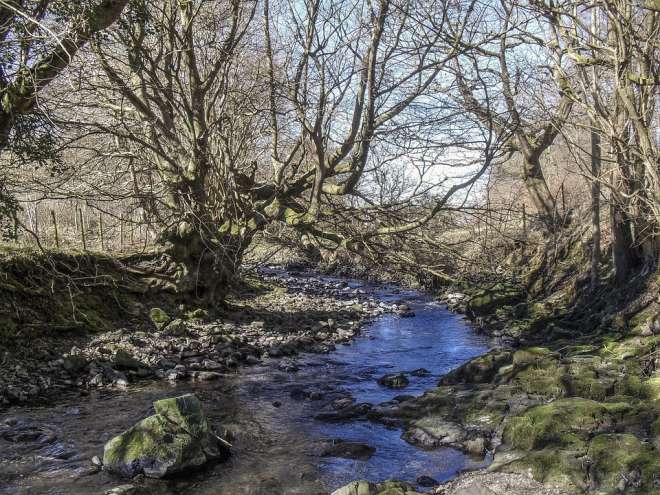
It Needs At least Two Water Sources
A river on your property is a Godsend gift. A well, or the capacity to dig one, is mandatory.
However, you don’t want your shelter to be visible from the river or from other water sources such as lakes and ponds.
Make sure no one can spot your house or cabin from any point around those water sources.
You should also check the rainfall averages and think about how to have the means to harvest that water.
Caveat: If there’s a river nearby, there’s always the likelihood of a flood happening at some point.
It Should Be Able to Comfortably Accommodate Everyone
People need their space, and having ample room to provide sufficient personal space for individuals and family units is critical for any BOL that will allow you to go the distance in a SHTF situation. For this reason, consider carefully how much room your chosen parcel can furnish.
You and your immediate family members will need far less room than a large group of survivors consisting of multiple families, or something even larger like a MAG.
Especially if you are going to turn your BOL into a legitimate homestead, multiple homes or even cabins on a small parcel will quickly begin to feel crowded, and will become even more intolerable if issues like waste and trash disposal become multiplied by the presence of multiple families.
If you have 3 kids and a spouse, that’s 5 people who’ll live there for months or even years.
This isn’t just about square feet; you need to make sure everyone will have a place to lay their head at night, a place to study, a place to play (for kids), and have more than one bathroom if you have a big family.
Also, considerations like raising livestock, planting gardens or crops, and allowing children room to play and frolic should also be planned for.
You Should Be Able to Raise Livestock
Deciding spontaneously that you’ll begin raising livestock at your BOL is not a strategy for success. Although this is a skill that anyone can learn, rearing animals is a complex skill set, and furthermore intricate knowledge of various breeds and their requirements is mandatory before embarking on such a journey.
Altitude, weather, overall climate, endemic threats from bacteria, fungus and parasites, available food or roughage and so much more must all be taken into account before choosing your BOL if you have your heart set on raising a certain species of livestock.
If you are not entirely certain that you want to raise livestock, or will have enough resources to devote to raising them except as a later phase of a long-term plan your best bet might be to choose your bug-out location and then determine what types of animals that location can support reliably and safely, then work backwards learning everything you can about those viable species.
Cows need a lot of food and water, but chickens, rabbits, goats, and sheep are a lot easier to keep.
Consider things like soundproofing your chicken coop, maybe even waterproofing it. Go for quieter chicken breeds. Nigerian dwarf goats are some of the easiest goats to raise.
If you free-range your livestock, you will end up with better quality eggs and meat. You also won’t have to worry about buying commercial food if stores and other places start to shut down.
You Need Access to Firewood
If there are trees on your property, you could build your retreat behind them, so you can’t see it from the main road. And if there’s a forest nearby, that’s free fuel for your fireplace that’ll keep you warm during winter.
If you don’t have trees on your property, consider some “fast” growing trees, such as the American Elm, and Sycamore, as well as thorny bushes. Just make sure you don’t build your house too close to the trees, to keep it safe should a wildfire occur.
If you can’t find or afford a property with its own trees, try to get property that is close to a wooded area or even a national forest.
When SHTF and chaos reigns, no one will notice a few trees missing here or there. If nothing else, you can collect dead branches and trees to use in your fireplace or woodstove.
You Should Be Able to Grow a Garden
1/4 acre should be enough to feed an entire family, but the quality of the soil is also important.
If the climate or land isn’t suitable for gardening, consider greenhouses, raised bed gardening, hoop houses and container gardening.
A Big Plus: Fish and Game Availability
You never know when you’ll run out of food or, even worse, you can find your bug-out location ransacked when you get to it. Having a food supply that doesn’t require tending is recommended.
The best source is to have plentiful wildlife on your property, but you can also consider using an aquaponics or hydroponics system to raise fish and vegetables.
Wild Edibles and Medicinal Plants
Post-collapse, doctors may not be available. Wild plants such as purslane, chicory, dandelions, jewelweed and dozens more can provide not just nutritional value but also valuable healing properties.
These plants can bring in precious calories when food may be scarce but can also save your life if you become sick or injured. Make sure you can identify and know how and when to harvest these valuable resources when needed.
Set Up Several Routes to Go in and Out
The last thing you want is to be trapped or ambushed in a home invasion at your BOL. You need several evacuation routes, and need to check them out periodically to ensure that they are still clear of any hazards or obstacles.
The Land Should be Reasonably Flat
If it’s not relatively flat at least in some areas, you’ll have a hard time building on it. Keep in mind you might also need to build a shed, a butcher shop, a chicken coop, and plant crops and veggies. Here’s a photo of Tara Dodrill’s shed below:
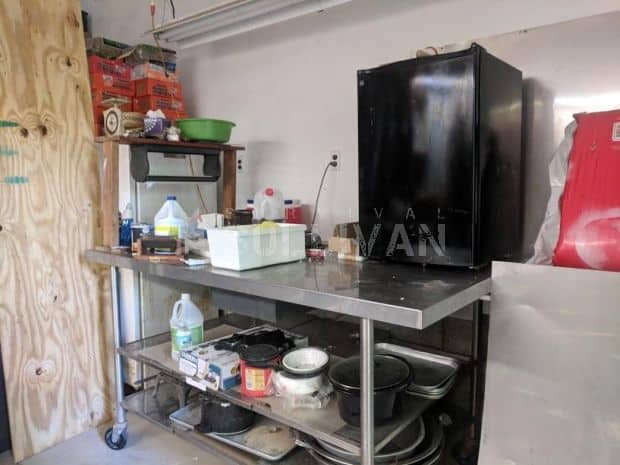
However, if your particular bug-out location has every, single other feature you want except the fact that it is not as flat as a pancake it might still work for you if you are able to adapt the land to your purposes.
Aside from the growing methods we just mentioned, it might be possible to terrace hillside into usable cropland, though this will be nowhere near as simple or efficient as performing the same operations on flatland.
The Land Should Not Be at Risk of Being Affected by Natural Disaster
Disasters such as flash floods, mud slides, avalanches, tornadoes, hurricanes, volcanoes, wildfires. Ask around to find out the last time a natural disaster like that happened.
Don’t be surprised if the previous owner is hesitant about giving you a straight answer. Do additional research by searching for disasters that’ve happened in the past.
Keep in mind that just because a disaster hasn’t happened frequently in the past, doesn’t guarantee it won’t occur in the future. You should know that reported natural disasters have increased a LOT in recent history:
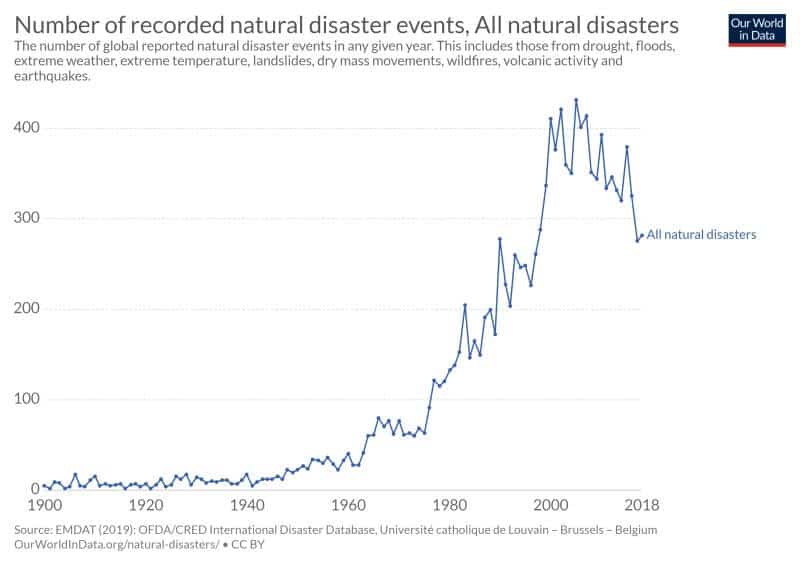
Check out these maps that show where each disaster is most likely to hit. And here’s another map that puts natural disasters into perspective.
Try to find a location that is away from physical threats from things such as floods, tsunamis, and nuclear plants but also has the natural resources you need.
The Land Should Not Have Any Legal Issues
This is very important. Sometimes you might be surprised to find out you can’t grow livestock or that you don’t own the water rights, or even the timber on your property.
In order to determine what restrictions are on a piece land, you’ll need to not only talk to previous owners or neighbors but also talk to your real estate agent, your local zoning board, and the health department.
Don’t forget to check state and federal regulations as well because these can override local ordinances if a problem occurs. Be very cautious about any property that has an HOA, covenants, or land easements attached to it.
Each of these things puts further restrictions on your property. An HOA can even regulate things such as what animals you can have, the kind of home you can build, or even what color your front door should be or what time your garage door must be closed at night!
You Need Year-Round Access to Your Location
For example, if your property is inaccessible during winter and disaster strikes during this season, getting there by vehicle may be impossible and even getting there on foot could be difficult.
The good news about this type of seasonally accessible property is that no one else can get to it either but you have to at least figure out a way to get in if need be when disaster strikes.
The location should not be visible from the main road. My grampa’s house is a good example since it’s positioned about 160 yards from the main road.
Not a lot, I know, but the secondary road is curvy so you’re not able to see the house from the road. (There is also a very large walnut tree blocking the view of the house).
If you do purchase a piece of property where the house is visible from the road, think about what kind of things you can do now to obscure the view from the road in the future.
You may have to include money in your budget to purchase trees to plant near the road or perhaps some large thorny bushes or other landscaping to create some additional isolation.
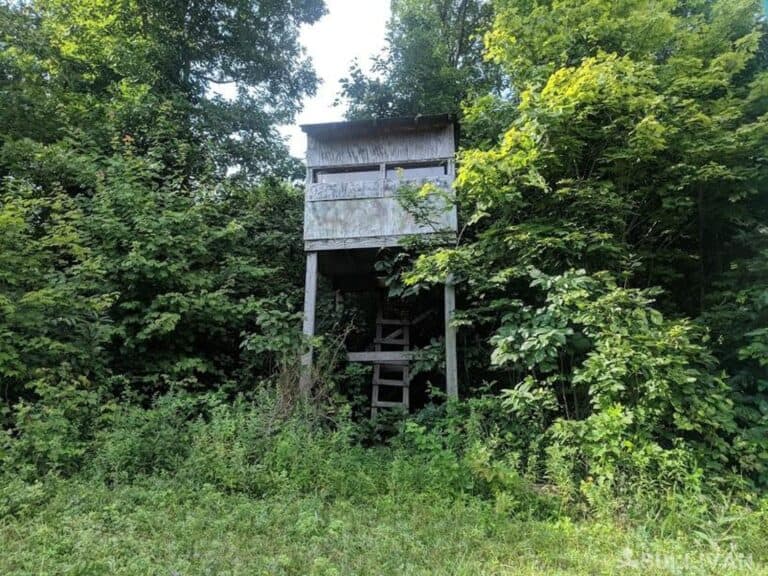
Types of Retreats
A number of different structures make good permanent bug-out shelters:
- a brick and mortar house
- a log cabin
- a bug out RV camper that you can park on your property
The first two options are the best and most popular but deciding between the first and the second is a matter of budget and ability to build one yourself.
If you have a little bit of carpentry skills, you may be able to purchase a log cabin kit and build most of it yourself to save money.
Some people prefer to build true fortresses using nothing but sandbags. These are called earth bag domes and you should watch this VERY interesting video on how to make them:
Of course, if you’re up to it and have the budget, you can always build a bunker. Bunkers have somewhat of a bad reputation due to the fact that they’re expensive to build and not necessarily better at protecting you.
Plus, if you’re surrounded by your attackers and have no place to go, they could just smoke you out or wait until you need water or food.
At the very least, you should have a safe room, which is built into your home and gives you a place to hunker down in the event of intruders.
My advice to you is this, if you really have the money to build a bunker, get two properties and build two bug-out cabins so you have two alternatives to go to if needed. Ideally, you want these locations to be in different directions from where you’re currently located.
Building Your Bug-Out Retreat
This is obviously not simple. It gets more complicated if you also need to lay a foundation so I’m not going to go into details here. One important thing you need be aware of is that you might need to clear the land first as there might be trees on it.
You should design your house in such a way that it faces south. Keep in mind that you might not have electricity post-SHTF so you’ll need all the sunlight you can get. Do the same with your barn and chicken coops. South facing windows will also help with heating your home in winter months.
Of course, one of your main concerns would be to properly insulate your bug out retreat.
During winter, keeping as much of the heat inside as possible is going to be a top priority. Construct it right from the beginning so you can save fuel later on.
Your next concern should be to properly hide your food, valuables, and survival weapons.
If someone finds your stockpile while you’re not at your BOL, they’re going to have all the time in the world to ransack it. Be sure to spread your stockpile around your house, yard, barns, and so on.
Don’t forget to slope your roof. When snow piles up, it’s going to exert a lot of pressure on your roof. Unless you’re there every time to shovel the snow off of it, you risk its collapse.
Preparing Your Bug Out Location
When you get to your BOL during a SHTF event, you probably won’t have anything more than a half-empty bug out bag. All your possessions from your primary location may be lost and the food and water you had was consumed getting there.
Needless to say, you need to have food and water ready and available at your bug out retreat. The trick is to split your food and water supplies between your home and your bug-out locations because you never know in which you’ll end up living in post-collapse.
Needless to say, you need to have food and water ready and available. The trick is to split your food and water supplies between your home and your bug-out locations because you never know in which one you’ll end up living post-collapse.
Speaking of water, you should definitely have means to harvest rainwater because it’s free and you can never have too much of it. Have the containers in place to collect all the rainwater they can from the rooftop.
Put filters in place to keep out large debris and make sure you treat the water before using it for drinking or cooking.
Next, you’re gonna need plenty of fuel. Propane, wood, coal, even solar panels, you should have as many options to heat your location as possible.
One thing you want to be really careful with is the possibility of house fires and wildfires. You should always have means to put out a fire. Always have non-potable water on hand and even a few fire extinguishers.
If you have a lot of trees or other debris around your home, you may want to familiarize yourself with how to create a fire break and how to trim landscape to prevent fire from spreading to your house.
Keep in mind the fire can start in your shed too. This happened to one of my neighbors a few years ago – me and a few others were already pouring bucket after bucket of water onto the fire before the fire marshals arrived.
Next, you’re going to make sure you hide your preps really well. Since you won’t be there most of the time, you need a way to make sure no one finds them even if they do decide to break in.
You can use false floors or false bottoms in dresser drawers. You can even create a hidden room behind a bookcase if your budget allows. But you can also hide your preps beneath coffee tables, under the bed and in buried caches around your property.
Last but not least, think about protecting your retreat, both now and after TEOTWAWKI. Without the rule of law, people might eventually take a shot at you, your supplies, or at your family. You need to:
- block most entry points on your property, so you’re never taken by surprise
- set up perimeter defenses such as:
- motion sensors
- security cameras
- early warming EMP-proof systems such as bells
- boobie traps
- fox holes and strategic places around the house that have good visibility and will allow you to shoot
Stockpiling
If you’re going to store some of your stockpile at your BOL, you need to focus on long shelf-life foods, the kind that don’t need to be rotated that often. Keep in mind that when you do bug out, there’s only so much space for things you can carry with you.
Focus on two categories of items:
- non-perishable
- and long shelf-life foods.
Things like:
| toilet paper | plastic and paper cups, plates |
| manual and electric tools | extra knives |
| alternative survival weapons | guns and ammo (careful how you hide these) |
| toiletries | cookware and kitchen supplies |
| fishing and hunting equipment | first aid supplies |
| zipper and trash bags | rope/cordage |
| clothing | footware |
| work gloves | …and more. |
Of course, maintaining a food supply at your bug out location is not easy. You’ll need to take regular trips to your BOL to move food and water back and forth, to take new supplies, and to bring back food that’s about to expire so you can eat it.
Some of the long shelf-life foods to consider include:
| dried beans | salt |
| honey | pasta |
| sugar | rice |
| canned food | cocoa powder |
| powdered eggs | …and more. |
Ideally, you should be using this location on the weekends to just go there, relax, and practice living off survival food. That way you’ll get yourself familiar with the surroundings as well as with all the various roads to get there.
Tips
Think About Multiple Bug Out Locations
Multiple bug-out locations on tap will serve to insulate you against the loss of your primary location, and will also provide you with options. Having options is essential for remaining adaptable, and adaptability is the name of the game in prepping.
Depending on what event is occurring the suitability of one BOL might improve over another. Your primary BOL could be ideal in nearly every circumstance…
But, as Murphy’s Law dictates, when you actually have to call upon your BOL you’ll be dealing with that one, particular event that is decidedly less than ideal!
It will be a great comfort if you have secondary and tertiary BOL’s to choose from at a time like that.
No, I’m not saying you should purchase 3-4 pieces of land, build log cabins and start a stockpile on each. That could get really expensive. Any place you can stay for a few days can be considered a bug out location:
- at your relative’s home in a different state
- on a piece of land that may belong to a relative, friend or neighbor where you can set up your tent for a few days or several weeks
- a place in the mountains or the woods where you hike or camp
- an abandoned building where you used to play as a kid
Set Up Survival Caches
Caching goods and gear ahead of time on your BOL is a great idea, so long as you can protect them against degradation, loss and theft.
This also serves as an excellent hedge against calamity while en route, as too many preppers assume that they will always be able to arrive at their BOL well-equipped and properly stocked.
Some of these preppers won’t have a prayer of surviving at their BOL unless they have a full gear train in tow.
You can ensure you’ll have at least some of the things you need to begin life anew on your BOL by setting up caches at it or along the route to it that you’ll be able to access.
Since you won’t be at your bug out location most of the time, you should hide as much of your stockpile as possible by:
- setting up underground caches in the form of PVC pipes
- setting up secret hiding locations (think fake books, and other hiding places inside coffee tables, kitchen furniture and even walls!)
Here’s a video we made to show yo how to make a PVC pipe cache:
Know Your Neighbors
Even if your closest neighbors are 500 yards away or more, you should still meet them. They probably share the same ideas you do about survival so they have no problem with preppers or with people walking around with a firearm.
Get to know them and start a post-apocalyptic home defense plan. Plus, once you are able to trust them, your neighbors might be able to check your house from time to time when you’re not there to make sure everything’s ok.
Start a Prepper Library
With no internet and, possibly, no power grid, you’ll be glad to have precious survival knowledge printed out. Keep some of these at your home and duplicates or similar books at your bug out retreat.
You don’t want to have to carry them back and forth. Besides, no looter will ever steal these books, they’ll mostly be looking for food and valuables, not “how-to” information.
It’s always good to have printed information about first aid techniques, medication side effects, wild edible identification, medicinal plant identification, as well as insect identification, tree identification, etc.
Think about all the things that you currently look up on the Internet, much of that you’ll need to have in written form if the grid goes down.
Make Sure You Have Cell Phone Signal
I know, I know, cell phone towers will be non-functional after SHTF. But what if they will work? If you’re not getting cell-phone signal with your current carrier, consider switching, or keep both.
It’s also a good idea to look at alternate forms of communication including a weather alert radio and two-way or handheld CB radios.
Fuel
Besides wood, what other fuel will you be using to cook, heat yourself and to warm up water to take baths and so on? You’ll need to properly stockpile all of your fuel to avoid a disaster.
Make sure you know proper storage conditions for each type of fuel and what to do to preserve the fuel and make sure it’s going to work properly when you need it.
Questions to Ask Yourself
Will You Be Moving There Permanently?
This is a good question to ask. If you’ve been contemplating moving somewhere quiet for a long time or if you simply want to be far away from civilization when it happens, you’re probably going to want to move to your bug out location full time.
If not, you should keep in mind that you’ll only be visiting your location every once in a while, and things might happen while you’re away.
The most dreaded scenario will be the one where you get to your BOL in a crisis and your location has been looted. Protecting your BOL is just as important as protecting your home.
Analyzing these maps takes a long time. Luckily, we did the hard work for you and found a few very good places you might want to look for land. And if you want to a pick a certain states, we tell you which are the best ones.
How Will You Cook?
This is important because you don’t want the smoke or smell to tip off people nearby that someone’s nearby, and that you have food. The smell of food could be carried up to a mile away, and the smoke can be seen from several miles.
There are ways to mitigate this risk, such as:
- building a Dakota fire pit to hide the flames
- making fire under a tree so the branches dissipate the smoke (don’t try this if you’re a newbie, there’s a risk the tree could catch fire)
- cooking indoors and making sure the kitchen is behind closed doors
- cooking at night so the smoke isn’t visible
Do You Own an RV Camper?
If you do, you probably don’t need a house on your land, unless you have the budget of course. If the RV is your bug out vehicle, you can park it on your survival retreat location, but keep in mind most RVs aren’t ideal bug out vehicles. They can fit more gear and passengers, yes, but they’re big and slow.
Final Words
In the long run, we should all try to move to our bug out locations, because it’s the only place to maximize our chances of survival. This takes time and, for many of us, it takes money, because you can’t afford to lose your job and the income it brings.
Nevertheless, a bug out location can have huge benefits even before SHTF… It’s a place for you to stay away from most if not all of the post-apocalyptic madness, to teach your kids self-reliance and homesteading, to homeschool them, and to grow a garden that can bring you free, fresh, organic food for life.
So, what’s next? Well, you can start by opening up google maps and look for possible locations to find properties. It’s 100% free. You can also start a new Excel document to write down all the properties you find.
Add not just the price per square foot but also the advantages and disadvantages of each property and each town or city where it’s located.

Another thing you can do is save and print this PDF checklist that will ensure you keep in mind the most important traits of any bug out location.
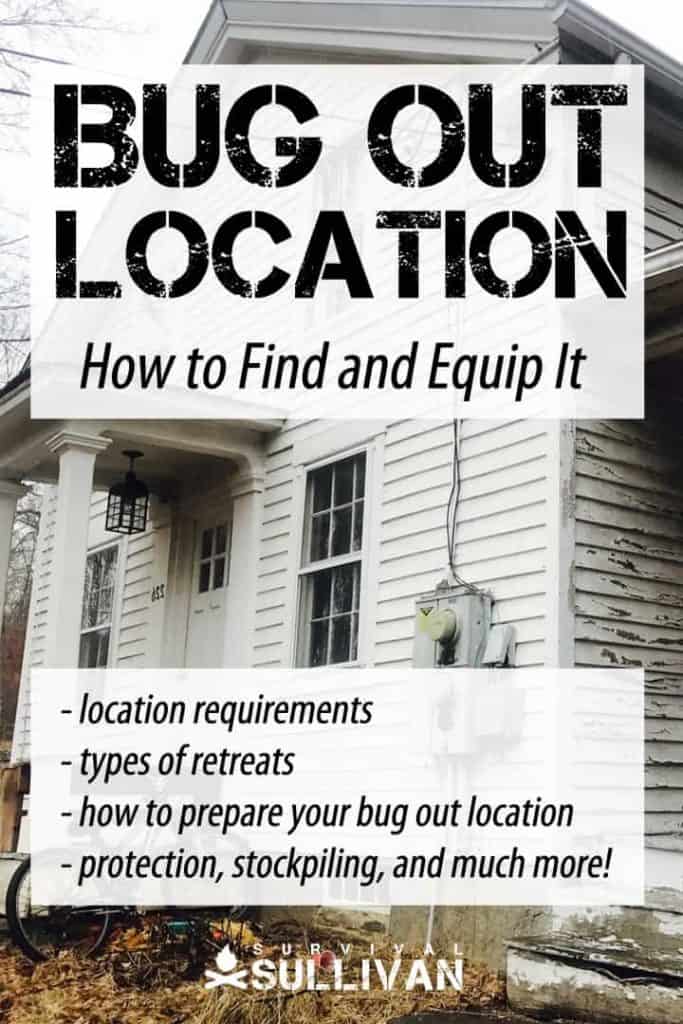

My dad was military. My grandfather was a cop. They served their country well. But I don’t like taking orders. I’m taking matters into my own hands so I’m not just preparing, I’m going to a friggin’ war to provide you the best of the best survival and preparedness content out there.

Hey
Good article, I’m in the process of planning my BOL at the moment and I am thinking of food resupply at the moment. I know how to hunt and forage but I was wondering about gardens. Since I’m not at the location for a long time (I may only go up every couple of weeks for a few days) I was wondering whether you thought it would be worth will putting in a garden/aquaponics system.
Thanks
Do a perennial garden. Once it gets going it’s low maint.
Thanks
We live in a small city and my parents live about 30 miles away up in the mountains. Their house is literally the only house at the end of a three mile long dirt road straight up the side of mountain. I have started storing things like canned goods, beans, rice and dog food at their place (rotating as necessary) and they have a well and solar panels for electricity. I have mapped out several routes from our house to theirs and keep copies of those maps in our vehicles. My father is an avid hunter and can grow anything in the most unforgiving soil, my mother is a nurse and incredible story teller, and their nearest neighbors are an MD and his wife (who loves to bake from scratch!) so I feel like this is a good bug out location in an EOTWAWKI type situation.
There is plenty of room for the two of us, our dogs, and my parents to live comfortably for quite a while and lets face it, my parents arent getting any younger and I would probably be so sick with worry about them I would be useless anywhere else.
the best bug out site may be what others abandon! Most think the city offers death. Life and death is where you find it. The ones who do not prepare for death in their own time shall have what fate hands them.
Grampa
YOU HAVE A GOOD SITE WILL KEEP COMMING BACK TO GET INFO. I’M LOOKING FOR QUICK SET UP SHELTERS HOW TO DO YOUR OWN INSTRUCTIONS AND PICTURES. THANKS, DARRELL
Thank you, I do my best!
I keep seeing articles telling people that they should bug out during a disaster. Has anyone considered what’ll happen to the place you’re leaving?
A thought about cell phones and GPS. If you are truly trying to keep your preps secret, you do not want to be tracked to your bugout location. That means no GPS, which routes can be accessed, or cell phones and modern vehicles, which can be tracked.